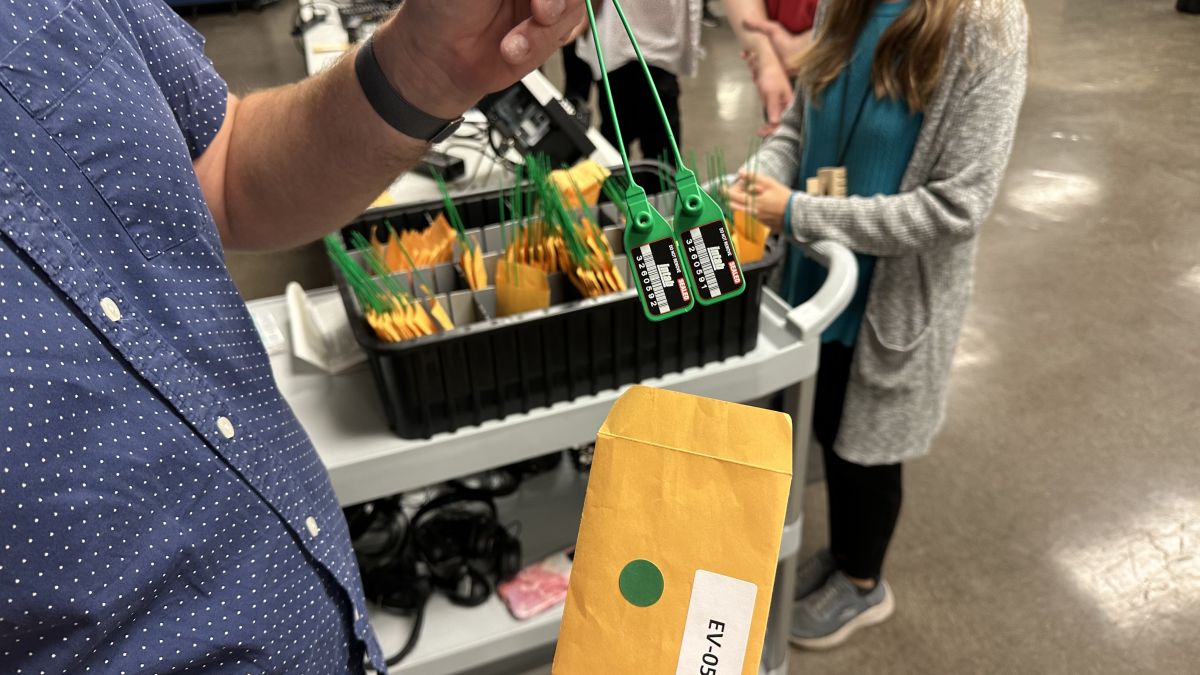
On October 4, the Marion County Election Board, county clerk, and several election employees greeted reporters and members of the public for an election equipment test. It was part of a regular board meeting and open to the public. After the board approved the county’s final election plan, the testing began.
Temporary workers and election equipment manufacturer employees filed in and took four stations. In a flurry of action, they cast mock ballots and watched as machines spit out corresponding paper records. Then, they locked the devices down and sealed them with green tags that say, “DO NOT REMOVE” and “SEALED.”
Simultaneously, hand-fed ballot scanning devices on a back wall printed long streams of paper that spilled onto the floor. And a large scanner labeled “ZEUS” was tested for mail-in and absentee ballots.
Indiana requires this pre-election “logic and accuracy test” by law, for all 92 counties. Each county must test 5 percent of its equipment. Marion County Clerk Kate Sweeney Bell said her county voluntarily tests 100 percent.
“I don't want [voters] to even have to think about this,” Sweeney Bell said in a later interview about election security preparations. “But it's my job to be prepared for — if a machine breaks down, or if the lines get long — how we inform voters. Now, part of this job is to work with other partners on the local, state, and federal levels to have a plan for any sort of interference, whether it is domestic, cyber or even international.”
Marion County’s test was a success: The results report shows all mock ballots cast matched the expected results.
Every year, local, state, and federal officials work to improve election security, and incidents of fraud are rare. Yet recent polling shows the debunked claim of voter fraud in the 2020 election fuels suspicion and an increase in threats to election workers.
Sweeney Bell said people should not be afraid to vote.
“Don't let anyone scare you into not voting, because your voice should count the same as every other voter's voice, and if you don't tell us who you want, we're not going to know. And you tell us by voting, and you make a change or keep things the same by voting. And by not voting, you're letting the boogeyman win,” she said.
To answer voter concerns about election security, WFYI reviewed dozens of state and federal testing documents, analyzed state equipment data, and interviewed local, state, and national experts. That reporting found evidence that Indiana elections are bipartisan, transparent, and functional. Here’s how officials worked to secure this election.
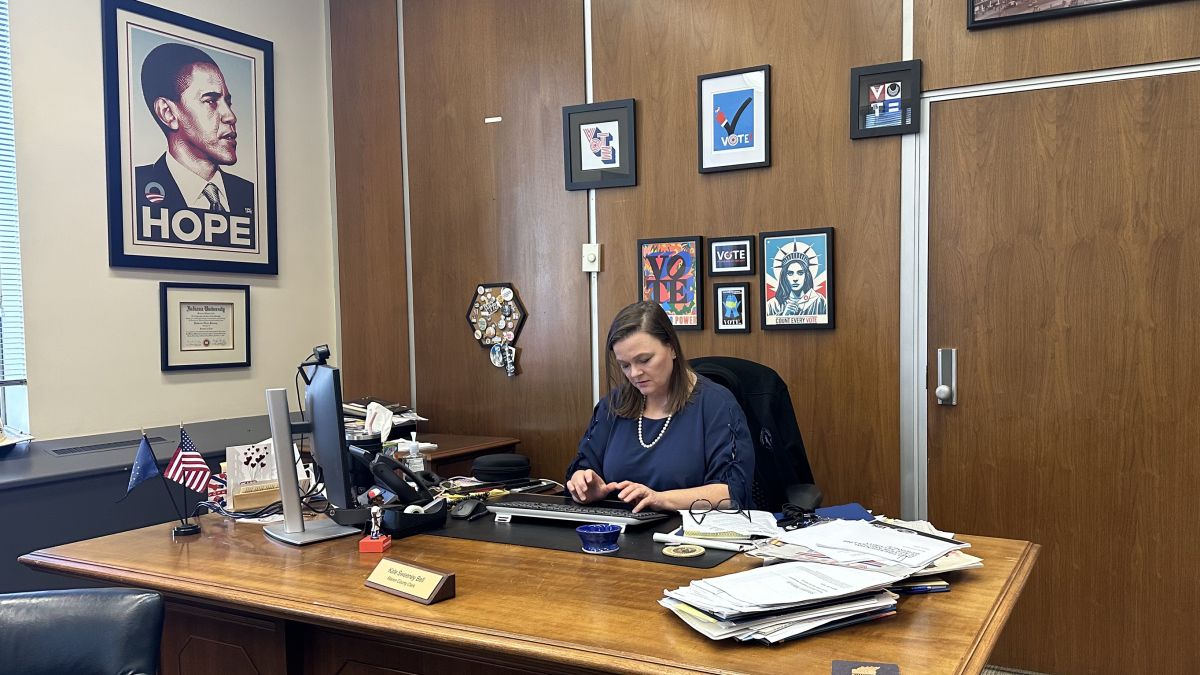
Each county chooses from state and federally-tested voting systems
States are in charge of elections, and Indiana elections run at the county level. The county’s clerk of courts is typically the top election official.
There are some variations across Indiana’s 92 counties. For example, counties may require people to vote in geographically-oriented voting precincts. Or some, like Marion County, allow voters to vote at any designated vote center.
Counties also chose their voting systems, which have three main functions: checking voter registration status, selecting candidates, and counting votes.
Indiana Code requires each piece of election equipment to be federally certified by the U.S. Election Assistance Commission. The state then uses those guidelines to do its own rigorous testing through the Voting Systems and Technical Oversight Program, or VSTOP, at Ball State University.
Chad Kinsella is a political science professor at Ball State and co-director of VSTOP. He’s one of the people in Indiana that tests systems before, during and after the election. He said all of Indiana’s approved election equipment is federally certified through one of two EAC-certified testing laboratories.
“At those labs, they are literally taken apart and rebuilt by the labs and go through all manner of testing to ensure they are secure. They are then sent to us for state certification,” he wrote in an email to WFYI. “Any changes they make, even as small as adding a new printer, must be certified. It is a very rigorous process.”
Pollbooks
The electronic pollbook is basically an iPad formatted for elections. Poll workers use it to check people in to vote and verify their registration status. It connects to the internet, but only on a private, secure network.
The electronic pollbooks “communicate over encrypted connections to secure servers that hold voter registration information,” Kinsella said. “Once a voter checks in to vote, all [electronic pollbooks] are updated, that way that same voter can’t drive to the next Vote Center or precinct and vote a second time.”
This setup provides poll workers with registration data and voting information in real time. “There is no connection between [pollbooks] and voting systems. No ballot information or tabulation is ever sent online,” he added.
All counties, except for possibly one, Kinsella said, use electronic pollbooks.
Over 85 percent of counties use an electronic pollbook manufactured by KNOWiNK, a WFYI analysis shows. ES&S and VR Systems supply them for thirteen other counties.
Knox County Clerk David Shelton said the adoption of electronic pollbooks in 2021 added extra protection.
“If you’ve already voted, it says you voted in the system. And you go to another vote center location, it throws up a red banner on the e-pollbook and says this voter has already voted and you can't proceed any further. There's no way to bypass that in the system if the voter is insisting upon, ‘I have not voted; something’s wrong,’” he said.
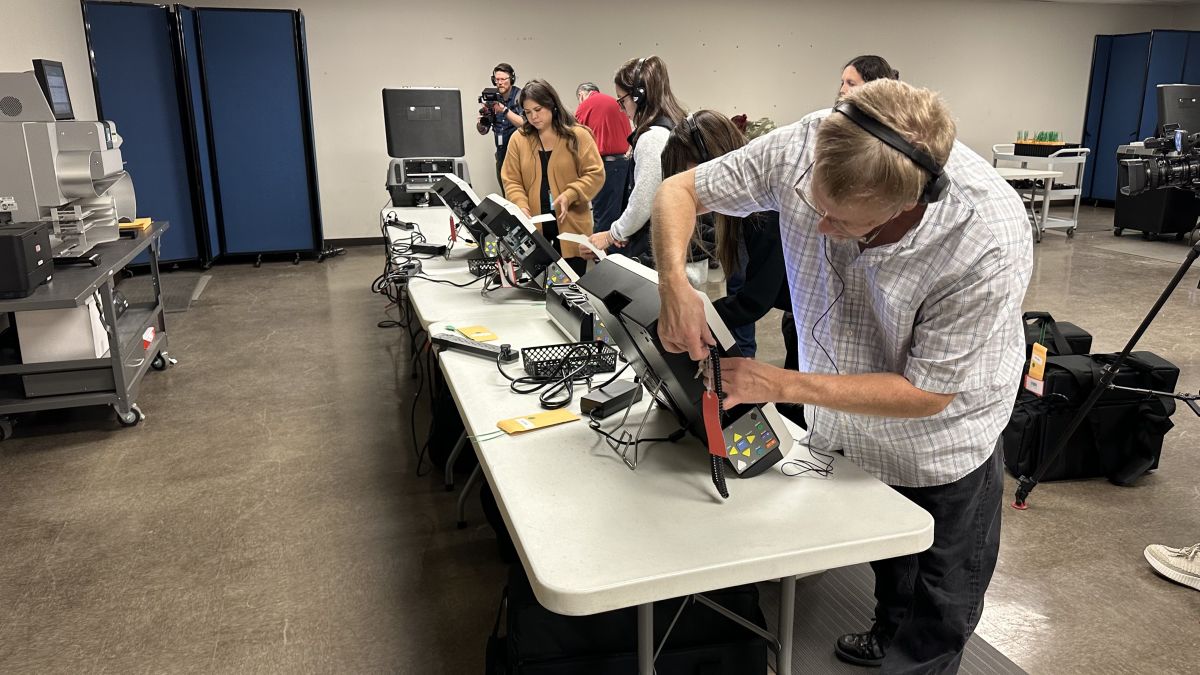
If something is wrong, you can vote with a provisional ballot.
Shelton said last election, the electronic pollbook flagged a voter for possibly attempting to vote twice. The pollbook “stopped it cold and did not allow,” and because he couldn’t determine the voter’s intent, Shelton let the case go.
Knox County did have a conviction for voter fraud in the 2020 election. Shelton said in an interview that a man attempted to vote three times — early in-person, by mail, and on Election Day. At that time, the county still used paper pollbooks, not the new digital pollbooks, and the poll worker didn’t see the mark in the book that flagged the man already voted absentee.
Shelton, a licensed private investigator, documented the incident and submitted his timeline to local authorities for use in the affidavit of probable cause. The case’s docket shows the voter accepted a plea agreement for voting more than once in an election.
“With technology in place now, that avenue for potential fraud has been closed,” Shelton said. “So that’s one of the good things with having more technology involved in our elections.”
Though some Republicans claimed fraud was rampant in the 2020 election, extensive investigations debunked those claims, including an exhaustive Associated Press review of voter fraud cases in swing states.
Ballot markers and scanners
Voters select candidates on ballot marking computers that include security features. Marion County uses the ES&S ExpressVote optical scan system, which produces a paper record. Then voters can verify their choices before scanning the record with a second scanning machine to cast votes.
If they make a mistake, they can take it to a poll worker to “spoil” the ballot, a legal process which allows the voter to correct the ballot before the vote is officially recorded.
“You only get one bite of the apple per election. But if you need a redo, you get a redo,” said Sweeney Bell, the Marion County clerk.
A paper record also creates an audit trail that can be reviewed in cases of a recount, candidate challenge, or other issue. Over a fifth of all counties use an optical scan system.
More than half of Indiana’s counties use a direct-recording electronic, or DRE, ballot marking device, which does not have the same type of paper record. Voters make their selections on the machine. Their choices are displayed on the screen for them to read. Votes are stored directly on the device.
In 2022, Governor Eric Holcomb signed a law requiring all of these devices to have a paper audit trail by July 1, 2024. In this election, voters using a direct-recording electronic device can look through a window on a printer to see the ballot. Their selections will be printed on thermal paper that remains inside the device.
All marking and scanning devices in Indiana are produced by four manufacturers according to 2024 VSTOP data obtained from the Indiana Secretary of State: Election Systems & Software, Hart Intercivic, Inc., MicroVote General Corp, and Unisyn Voting Solutions. Seven different voting system models run on twelve versions of software.
Experts say there are pros and cons to allowing counties to choose unique voting systems, versus having the state mandate a uniform system.
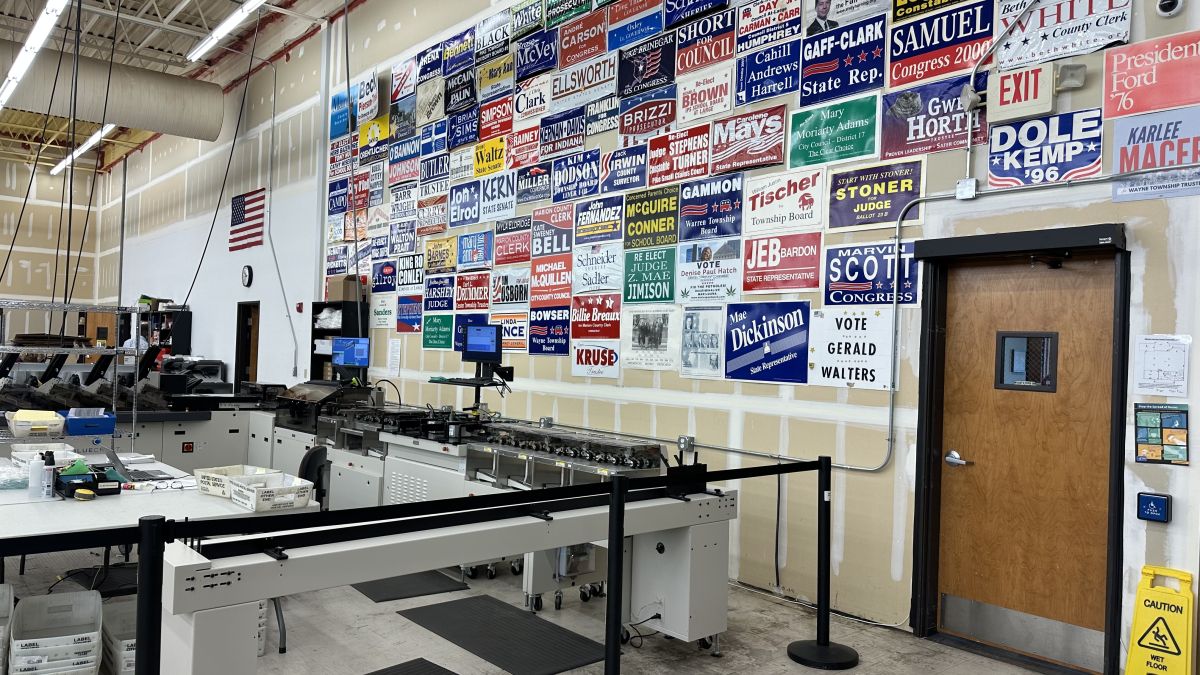
Mark Lindeman, the policy and strategy director for Verified Voting, a nationally-oriented nonprofit that advocates for secure elections, gave Georgia as an example of a statewide system.
“Every county, all 159 of them, God bless, use the same voting system — famously, the Dominion [Voting Systems], right? Indiana has more of a potluck approach,” he said.
He said Indiana’s decentralization is a “mixed bag.”
“It maybe makes it harder to promise that nothing will go wrong anywhere,” he said, “but it gives me great confidence that nothing will go wrong everywhere, because the technological ecosystems are just so different. It’s really like dozens of different elections being held in Indiana simultaneously on slightly different configurations of equipment.”
Lindeman said officials can talk about how the equipment is tested and that it’s physically secured against hacking, but the move most likely to build confidence is Indiana’s move to paper records.
“I think that’s a good place for Indiana to be, and I’m so grateful for the folks at VSTOP — because if their audit program is actually looking at those paper ballots and records, that’s kind of what has to happen,” he said.
Co-director of Indiana’s election technology testing program Kinsella understands that some people may be concerned that the machines could be hacked, but he says no.
“No voting machines in Indiana or anywhere else connect to the internet. Again they are rigorously tested to ensure they do not and cannot connect to internet. The [federal] labs do penetration testing to make sure that no [one] could access them,” he said.
Indiana tightened voter ID laws
Indiana requires voters to show a valid form of ID at the polls in order to vote. Since the last presidential election, the state also tightened rules around ID requirements for absentee ballot applications. The same law also requires the state to compare the voter registration list with Bureau of Motor Vehicles data to verify the citizenship status of voters.
Lindeman, of Verified Voting, said that voters should take confidence that the state’s ID law is providing an extra layer of security.
“To the extent that folks might wonder, ‘Well, what prevents large numbers of people who don’t even live in Indiana from voting in Indiana elections?’ Well, your voter ID law does that,” he said. “I live in upstate New York. How on earth am I going to vote in an Indiana election?”
At the same time, voter ID restrictions in the name of election security can also impact voter access. Critics of tight voter ID laws, like the Brennan Center, argue that research shows extra verification steps can amount to barriers for vulnerable voters.
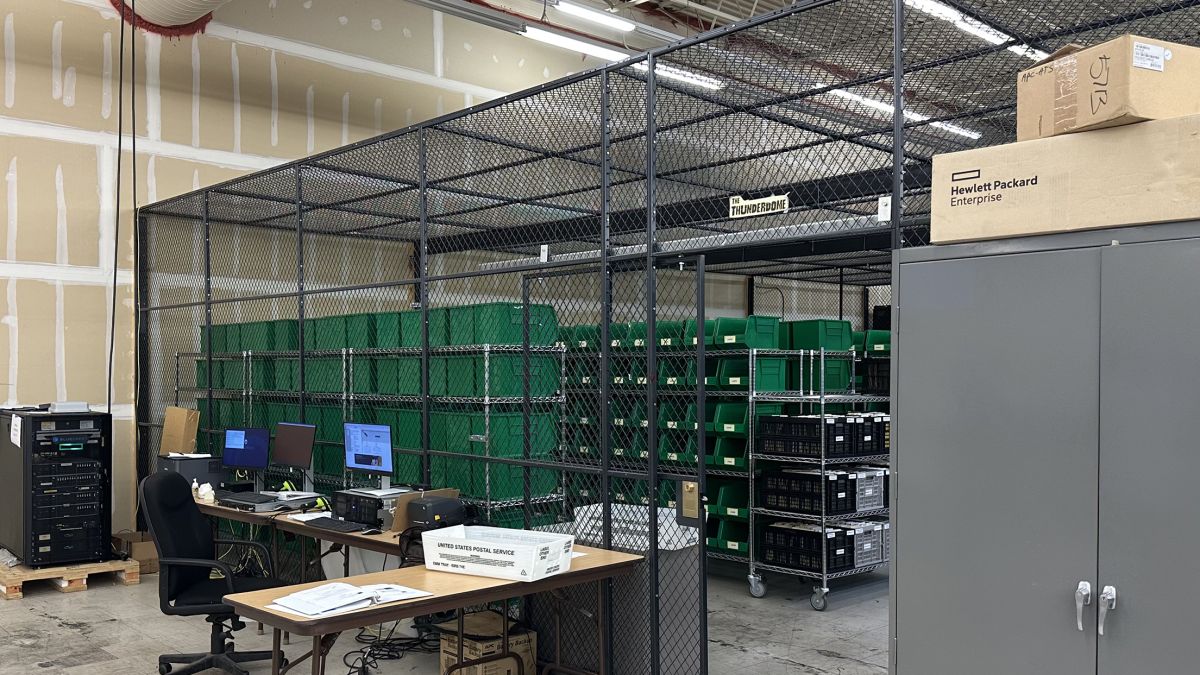
Danielle Lang is the lead voting rights attorney for the Campaign Legal Center, a national nonprofit that focuses on litigation related to campaign finance, redistricting, ethics, and elections. She said voter ID laws need to be looked at in context.
“They are well-run,” she said of U.S. elections in an interview with WFYI. “They have federal and state and local safeguards all in place. So when you see a state pass an additional restriction on access to voting, it’s doing so in a context of what is already a secure election system.”
She said the laws tend to impact the voting rights of voters of color, low-income voters, young people, people experiencing homelessness, voters with disabilities, and older voters. In 2021, several states passed laws restricting voting access, leading to concerns of voter suppression.
In Indiana, concerns broke out last month when Secretary of State Diego Morales and Attorney General Todd Rokita sent a letter to the U.S. Citizen and Immigration Services requesting that the agency verify the citizenship status of 585,774 registered voters. Civil rights organizations like the Indiana League of Women Voters, Common Cause Indiana, and the Indiana State Conference of the NAACP signed a letter pointing out the National Vote Registration Act “prohibits” disqualifying voters if there are fewer than 90 days left before the election.
Absentee ballots have built-in security features
Voters are able to cast their ballots early in one of two ways — either in-person or by mail.
The state restricted access to these two forms of voting since the previous presidential election, during the pandemic. Voters are required to provide additional identification when submitting an application to vote absentee. They can qualify if they meet one of 11 reasons outlined in law, such as having a disability or working on Election Day. Voting early or by mail can only be done during a specific time window. Ballots — with an exception for military voters — must be received by 6 pm on Election Day.
There are security features and checks in the process, including ID checks, signature comparison, and sealing and signing the ballot under penalty of law. Knox County Clerk Shelton said that election staff know who apply for absentee ballots, confirm signatures, and will only count these specific ballots.
In Marion County, the election board uses tracking numbers to follow mail ballots through the U.S. Postal Service. Clerk Sweeney Bell said the use of mail ballots is not new to this country.
“It is something that has been offered and afforded to eligible citizens as far back as the Civil War. If someone is concerned about mail-in ballots, they shouldn't use one. They should come in and vote,” she said. “If someone else is concerned about another person’s mail-in ballot? Bye. I can’t control what the United States Postal Service does, but we work closely with them. It’s not like we just shove it in any random envelope.”
She noted mail ballots are priority mail for the USPS.
The postal service declined an interview with WFYI, but spokesperson Susan W. Wright sent a statement.
“This year, just as we have in previous elections, we will deploy longstanding processes and procedures, as well as allocating additional resources, including, but not limited to, expanded processing procedures, extra transportation, extra delivery and collection trips, and overtime, to ensure that Election Mail reaches its intended destination in a timely manner,” it read.
Threats to election workers
An NPR/PBS News/Marist poll shows many Republicans fanned fears of voter fraud, despite extensive reporting that it is rare and negligible. Research also shows those fears increasingly result in threats of violence and abuse of local election workers.
A national survey of election officials from the Brennan Center found that death threats, online harassment, and abuse faced by election officials have risen and there is more turnover. The report shows 30 percent of local election officials this year said they were personally threatened, harassed, or abused because of their job.
The Brennan Center’s Director of Partner Engagement Elizabeth Howard follows this trend.
“Seventy percent of election officials indicated that threats against them have increased since 2020,” she said. “This current threat environment is very different than what I faced when I was an election official, which was from 2014 through 2018.”
This spring, at least one Indiana election official left the field due to concerns about safety. Former Vanderburgh County Clerk Carla Hayden said several “election deniers” were behind the harassment. She said she experienced it for three years, but it recently got worse.
“It’s through letters, it’s through phone calls, it’s through people showing up,” she said, according to local news reports.
And a man from Carmel was recently sentenced to 14 months in prison for threatening a Michigan election worker. Andrew Nickels accused the election worker of defrauding the country’s election. In his voicemail, he threatened to kill the official.
“[W]e’ll [expletive] kill you…,” he said, according to a U.S. Department of Justice release. “[Y]ou will [expletive] pay for your [expletive] lying ass remarks … We will [expletive] take you out. [Expletive] your family, [expletive] your life, and you deserve a [expletive] throat to the knife … Watch your [expletive] back … watch your [expletive] back.”
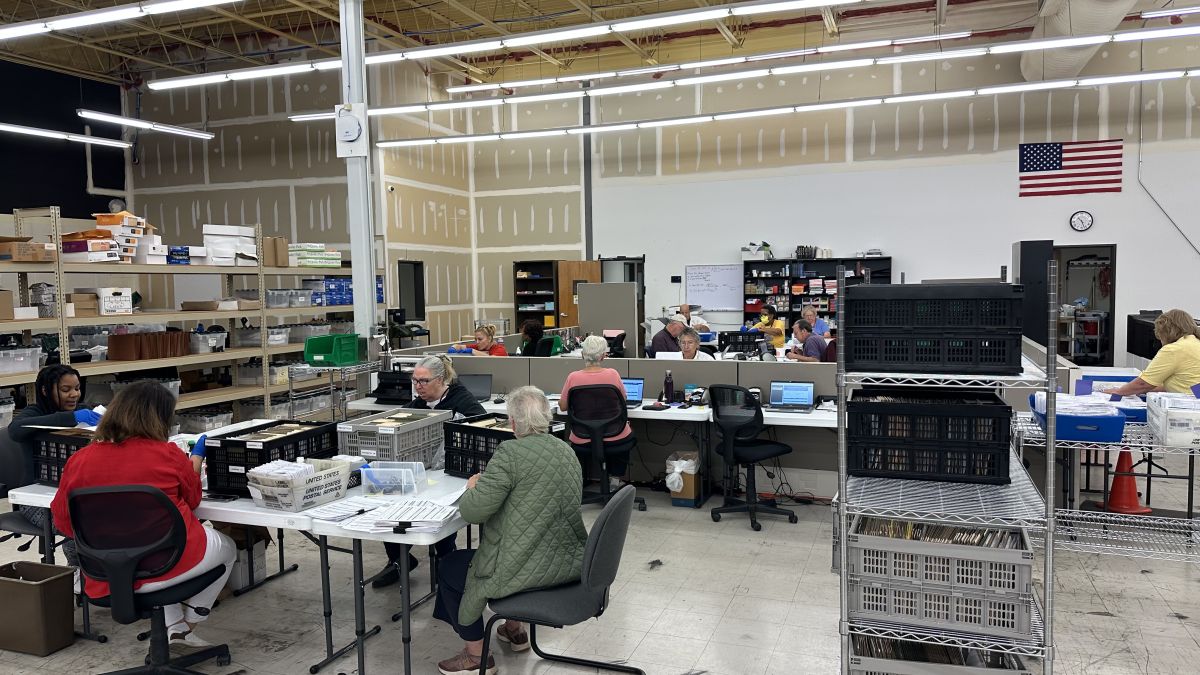
Howard noted harassment isn’t only happening in swing states.
“This is happening in solid red states and solid blue states and purple states across the country, and this is a concern for local officials as well as state election officials. We're seeing Republicans and Democrats being targeted. We've had Republican and Democratic secretaries of state who've been swatted,” she said.
In September, Republican Indiana Secretary of State Diego Morales received a suspicious package with an unidentified powdery substance later determined to be “non-hazardous,” according to a statement from the office. Six law enforcement and national security agencies responded to the threat and transported the substance to the FBI for testing.
Election officials WFYI spoke with in Marion and Knox counties said they’ve been preparing for this election and feel ready.
“For voters, we have plans in place for the worst things you can imagine. We hope that we will not have to exercise any of those plans or put forward any of the processes that we have in place when, if, things were to hit the fan, so to speak,” Marion County’s Sweeney Bell said.
Knox County’s Shelton said he’s encountered groups that spread misinformation about elections: “There’s a lot of groups in Indiana, what we call ‘election enthusiasts.’ They feel like all the elections are hacked and rigged and stolen, even here in Indiana. Even though Trump won resoundingly in 2020 here in Indiana, they still think the system is rigged, and they can be intimidating.”
Not everyone has reported increased harassment. Angela Nussmeyer, Democratic Co-director of the Indiana Election Division, said that other than the incident with the secretary of state, she has only seen “the usual number of folks with short tempers.” But she said she is in a different position than those running elections.
“County election officials, on the other hand, are on the front-line and take the brunt of it but usually take it in stride the best they can to ensure their elections are properly managed,” she wrote in an email.
From a national perspective, Howard said she expects the election security misinformation impacts to continue after Election Day.
“There's a couple of dates that are important, which include: December 11, which is the deadline for state officials to send information to Congress about who won the state election; and December 17, which is going to be the date that the presidential electors meet in each state to cast their ballot; and then January 6, again, will be the congressional certification; and January 20 will be the swearing-in. So it's more of an election season than an Election Day,” Howard said.
—CLARIFICATION: This story was updated on Monday, Nov. 4, to clarify that Knox County Clerk David Shelton is a licensed private investigator.
Contact data journalist Zak Cassel at zcassel@wfyi.org.
 DONATE
DONATE


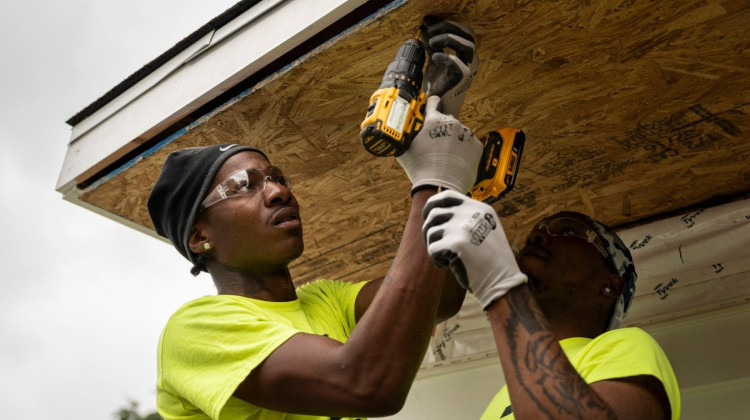



 Support WFYI. We can't do it without you.
Support WFYI. We can't do it without you.